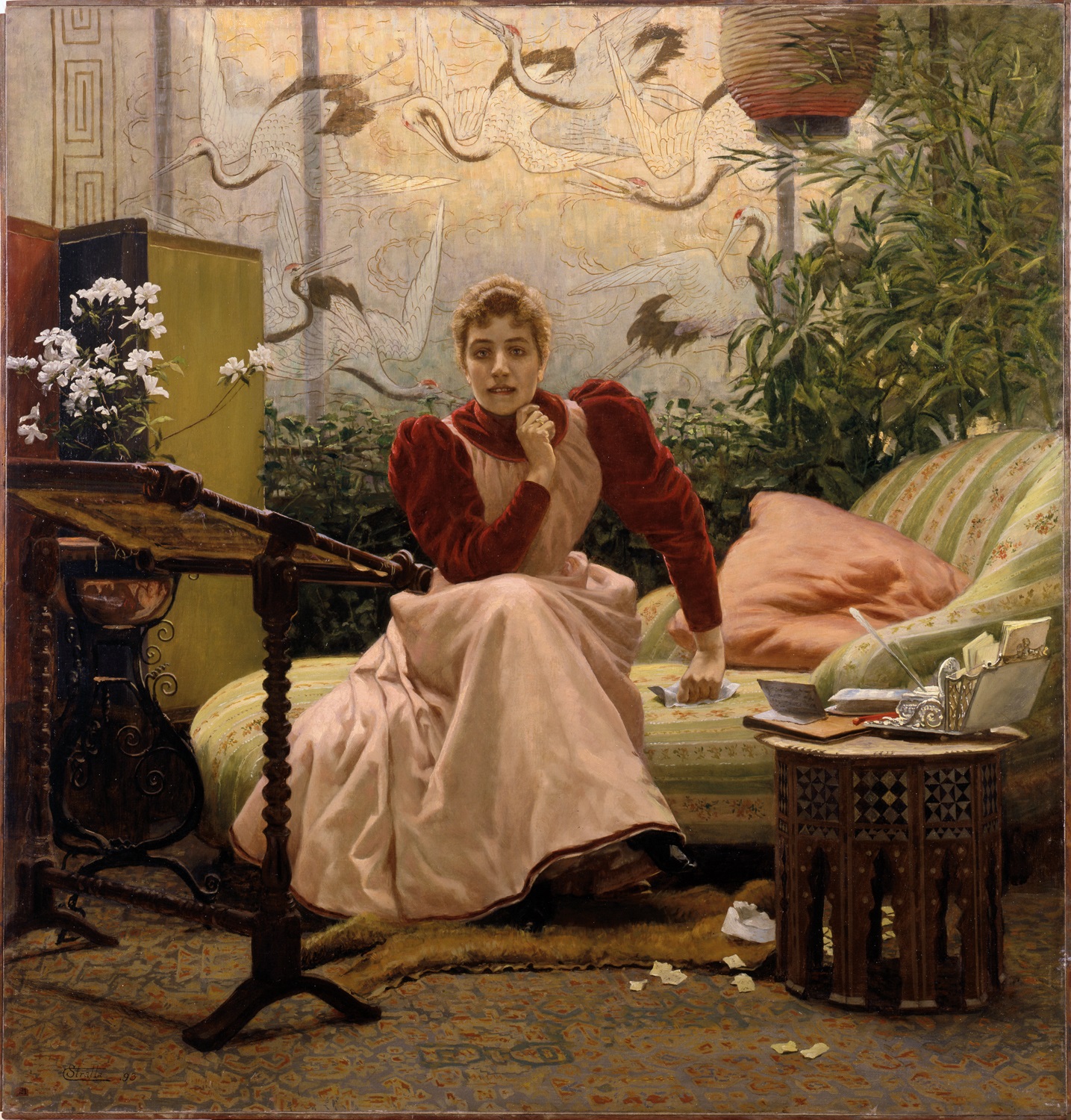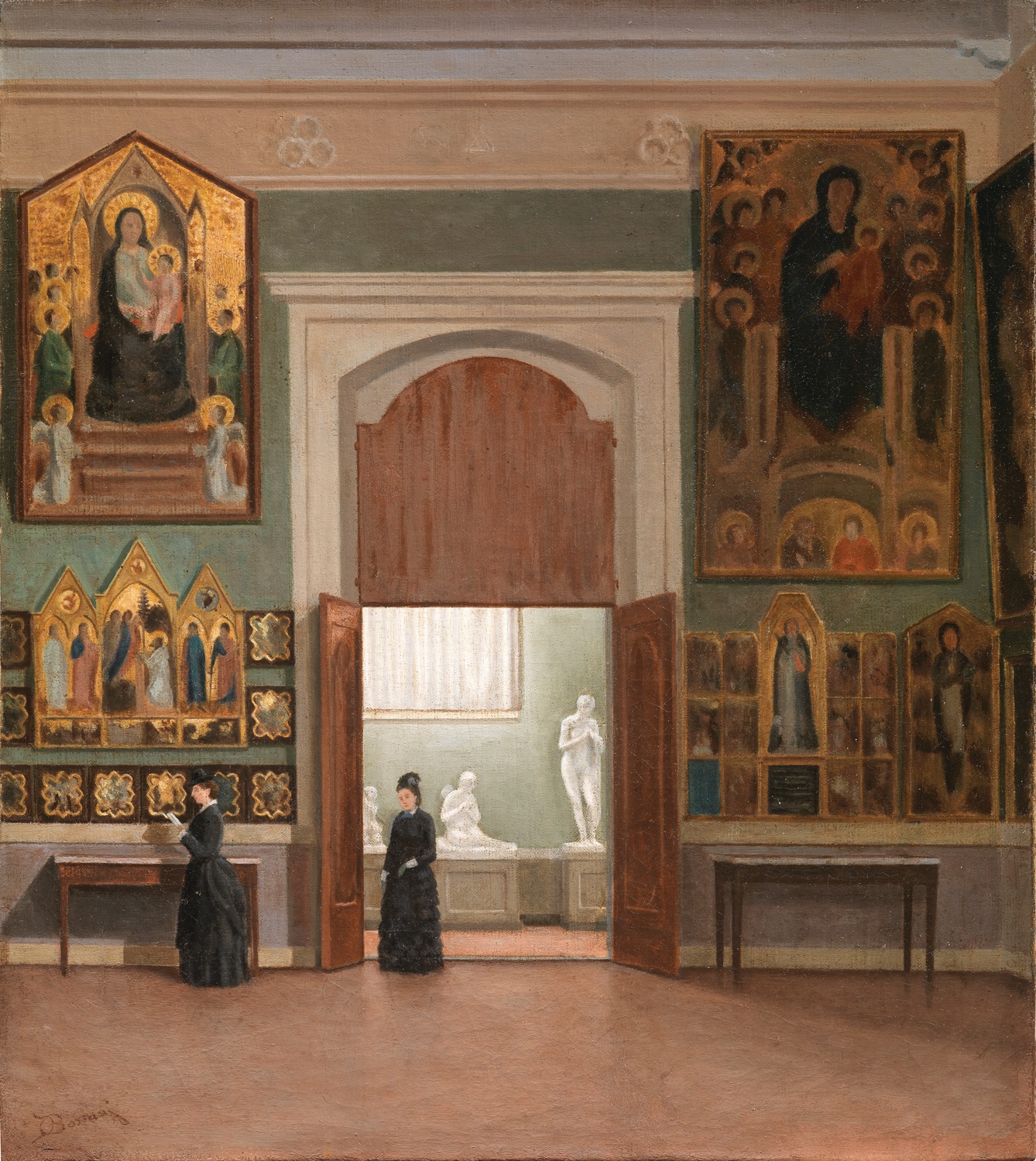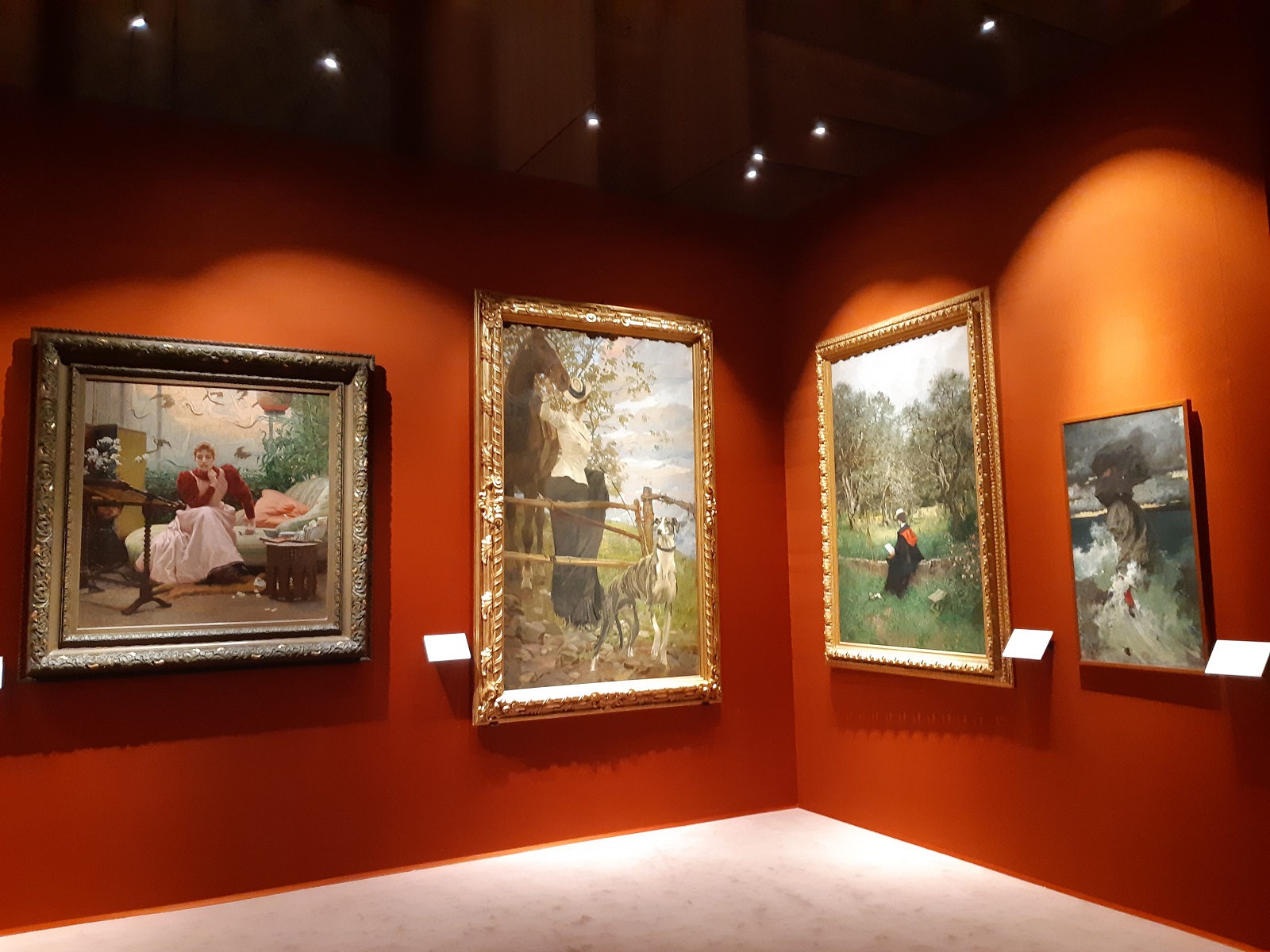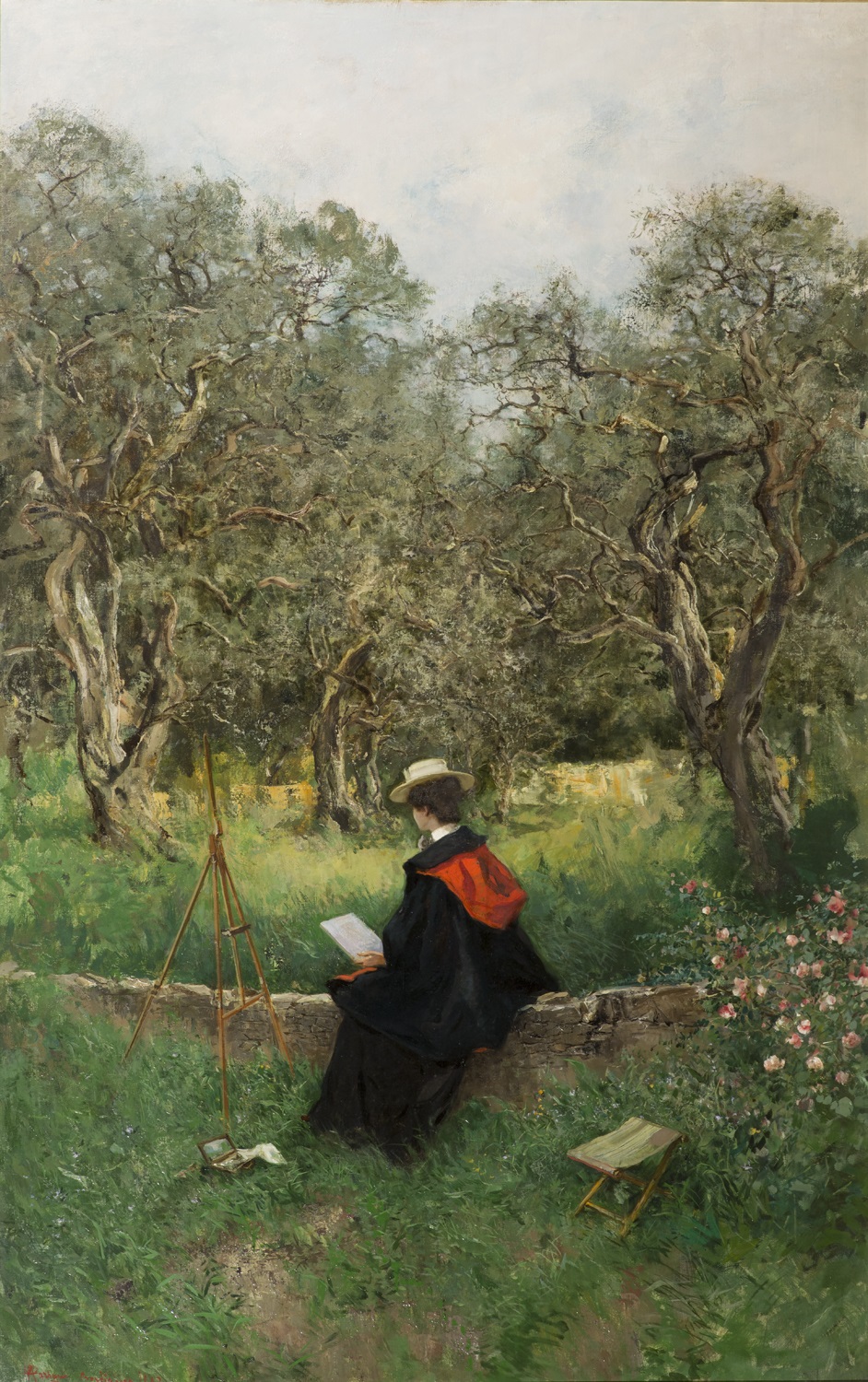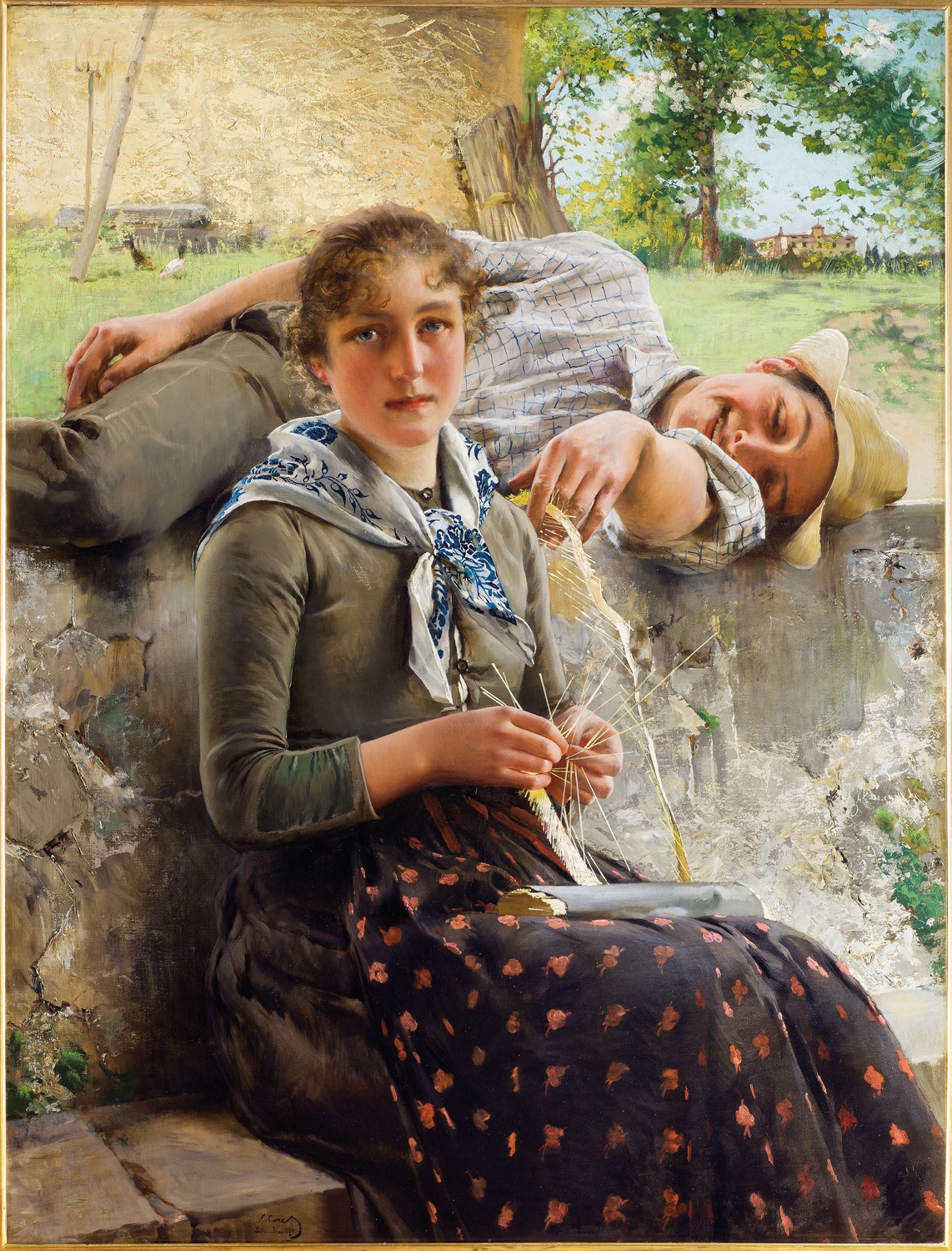Glimpses of ‘Female Perspectives’
Female Perspectives
Women of Talent and Commitment 1861-1926
This year, 2019, the Uffizi Galleries and Advancing Women Artists are celebrating International Women's Day (March 8) with an exhibition devoted to the professional commitment and talent of women in Italy from the late 19th and to the early 20th centuries. In this period, Florence was a favourite destination and meeting place for leading members of the female world not only in literature and the arts but also in the sphere of social and political engagement on an international scale. The city hosted women of the calibre of Elizabeth Barrett Browning, Jessie White Mario, Theodosia Garrow Trollope and Margaret Fuller. The exhibition, pans out in a scenic fashion around a central core of large works, thus allowing its female protagonists to emerge as the true stars of the show. The tour continues in the halls of the Galleria d'Arte Moderna di Palazzo Pitti, which host one of the most magnificent collections of ‘working women’ at the turn of the last century.
Women of Talent and Commitment 1861-1926
This year, 2019, the Uffizi Galleries and Advancing Women Artists are celebrating International Women's Day (March 8) with an exhibition devoted to the professional commitment and talent of women in Italy from the late 19th and to the early 20th centuries. In this period, Florence was a favourite destination and meeting place for leading members of the female world not only in literature and the arts but also in the sphere of social and political engagement on an international scale. The city hosted women of the calibre of Elizabeth Barrett Browning, Jessie White Mario, Theodosia Garrow Trollope and Margaret Fuller. The exhibition, pans out in a scenic fashion around a central core of large works, thus allowing its female protagonists to emerge as the true stars of the show. The tour continues in the halls of the Galleria d'Arte Moderna di Palazzo Pitti, which host one of the most magnificent collections of ‘working women’ at the turn of the last century.
A mini gallery…
“Female perspectives” inaugurated
"Female perspectives", translated as ‘Lessico Femminile’ in Italian was curated by Simonella Condemi and will be held at Palazzo Pitti, Galleria d'arte moderna, Sala del Fiorino from March 7 to May 26, 2019. On March 6, the Uffizi Galleries hosted the inauguration the much-awaited show at Palazzo Pitti’s Sala Bianca, a prestigious venue in the heart of the sixteenth-century palace purchased by Duchess Eleonora de Toledo. "This exhibition is the second one the Uffizi Galleries have done in partnership with Advancing Women Artists. The first was in 2017, and it featured Renaissance artist Plautilla Nelli. Today’s show is another example of their work, yet only scratches the surface of a much deeper endeavor that has been carried out for years in Florence," Schmidt said.
"Female perspectives", translated as ‘Lessico Femminile’ in Italian was curated by Simonella Condemi and will be held at Palazzo Pitti, Galleria d'arte moderna, Sala del Fiorino from March 7 to May 26, 2019. On March 6, the Uffizi Galleries hosted the inauguration the much-awaited show at Palazzo Pitti’s Sala Bianca, a prestigious venue in the heart of the sixteenth-century palace purchased by Duchess Eleonora de Toledo. "This exhibition is the second one the Uffizi Galleries have done in partnership with Advancing Women Artists. The first was in 2017, and it featured Renaissance artist Plautilla Nelli. Today’s show is another example of their work, yet only scratches the surface of a much deeper endeavor that has been carried out for years in Florence," Schmidt said.
Florence a magnet for expat women artists
"Florence was a magnet for foreign women artists who sought to carve out 'a room of their own' in the salon and the studio – and, eventually, the academy itself. International female artists are well represented in this exhibition because 'ex-pat women' enjoyed a brand of freedom in Italy that was unknown in their home countries," explains Linda Falcone, director of Advancing Women Artists, "This freedom is represented by works painted by German symbolist Julia Hoffmann Tedesco who emulated her Macchiaiolo husband’s interest in portraying women and their personal sphere, Irish portraitist, poet and palatine for the Italian cause, Louisa Grace Bartolini, Mary Egerton Bracken, an English socialite and painter who frequented the Browning’s entourage at Casa Guidi, and French-born Nabis artist Elisabeth Chaplin, the youngest and most prolific artist represented in the Gallerie degil Uffizi's collection."
"Florence was a magnet for foreign women artists who sought to carve out 'a room of their own' in the salon and the studio – and, eventually, the academy itself. International female artists are well represented in this exhibition because 'ex-pat women' enjoyed a brand of freedom in Italy that was unknown in their home countries," explains Linda Falcone, director of Advancing Women Artists, "This freedom is represented by works painted by German symbolist Julia Hoffmann Tedesco who emulated her Macchiaiolo husband’s interest in portraying women and their personal sphere, Irish portraitist, poet and palatine for the Italian cause, Louisa Grace Bartolini, Mary Egerton Bracken, an English socialite and painter who frequented the Browning’s entourage at Casa Guidi, and French-born Nabis artist Elisabeth Chaplin, the youngest and most prolific artist represented in the Gallerie degil Uffizi's collection."
Quotes to remember
"In the space of just over half a century, the time frame explored in the exhibition, conditions developed for women's social liberation and for a new independence for them, so that they were no longer restricted to the sole role of angel of the hearth,” says Eike Schmidt, the Uffizi Galleries’ Director "The exhibits tell the story of a time when the question of women came to the fore, when engagement in the workplace, political interests, intellectual life and independence were still a privilege or the result of a struggle." Simonella Condemi, who curated the exhibition and directs the Galleria d’Arte Moderna di Palazzo Pitti, added: "women had to build their own identity in society and in the workplace while continuing to play a crucial role in the daily life of the family and in the home. We are striving to pay tribute to women's tireless endeavours by showcasing both the variety of different ways in which it that toil was expressed and women's talent in the fields of art, photography, writing, teaching, politics and many other spheres."
"In the space of just over half a century, the time frame explored in the exhibition, conditions developed for women's social liberation and for a new independence for them, so that they were no longer restricted to the sole role of angel of the hearth,” says Eike Schmidt, the Uffizi Galleries’ Director "The exhibits tell the story of a time when the question of women came to the fore, when engagement in the workplace, political interests, intellectual life and independence were still a privilege or the result of a struggle." Simonella Condemi, who curated the exhibition and directs the Galleria d’Arte Moderna di Palazzo Pitti, added: "women had to build their own identity in society and in the workplace while continuing to play a crucial role in the daily life of the family and in the home. We are striving to pay tribute to women's tireless endeavours by showcasing both the variety of different ways in which it that toil was expressed and women's talent in the fields of art, photography, writing, teaching, politics and many other spheres."
The catalogue
The catalogue is published by Sillabe in two versions, Italian and English. Here’s a snippet from Falcone’s foreword: “The works in our Women’s Day exhibition, much like the essays that comprise this volume, are not, in fact, products of relegation. Instead, the art of women is interspersed with that of their male counterparts, to represent a moment in history when both male and female artists finally converged toward the same question: how could the perspective of women be properly captured on canvas? But the true ‘happiness’ of this show is the realization that much more than the canvas was actually being claimed: in the late nineteenth and early twentieth centuries, female creativity developed under many guises: in fabric and fashion, on page and stage, and on both sides of the art studio – as model or artist. The newfound ‘art of light’, otherwise known as photography, became a creative medium available to women, and the same is true of sculpting and, finally, science.
The catalogue is published by Sillabe in two versions, Italian and English. Here’s a snippet from Falcone’s foreword: “The works in our Women’s Day exhibition, much like the essays that comprise this volume, are not, in fact, products of relegation. Instead, the art of women is interspersed with that of their male counterparts, to represent a moment in history when both male and female artists finally converged toward the same question: how could the perspective of women be properly captured on canvas? But the true ‘happiness’ of this show is the realization that much more than the canvas was actually being claimed: in the late nineteenth and early twentieth centuries, female creativity developed under many guises: in fabric and fashion, on page and stage, and on both sides of the art studio – as model or artist. The newfound ‘art of light’, otherwise known as photography, became a creative medium available to women, and the same is true of sculpting and, finally, science.






